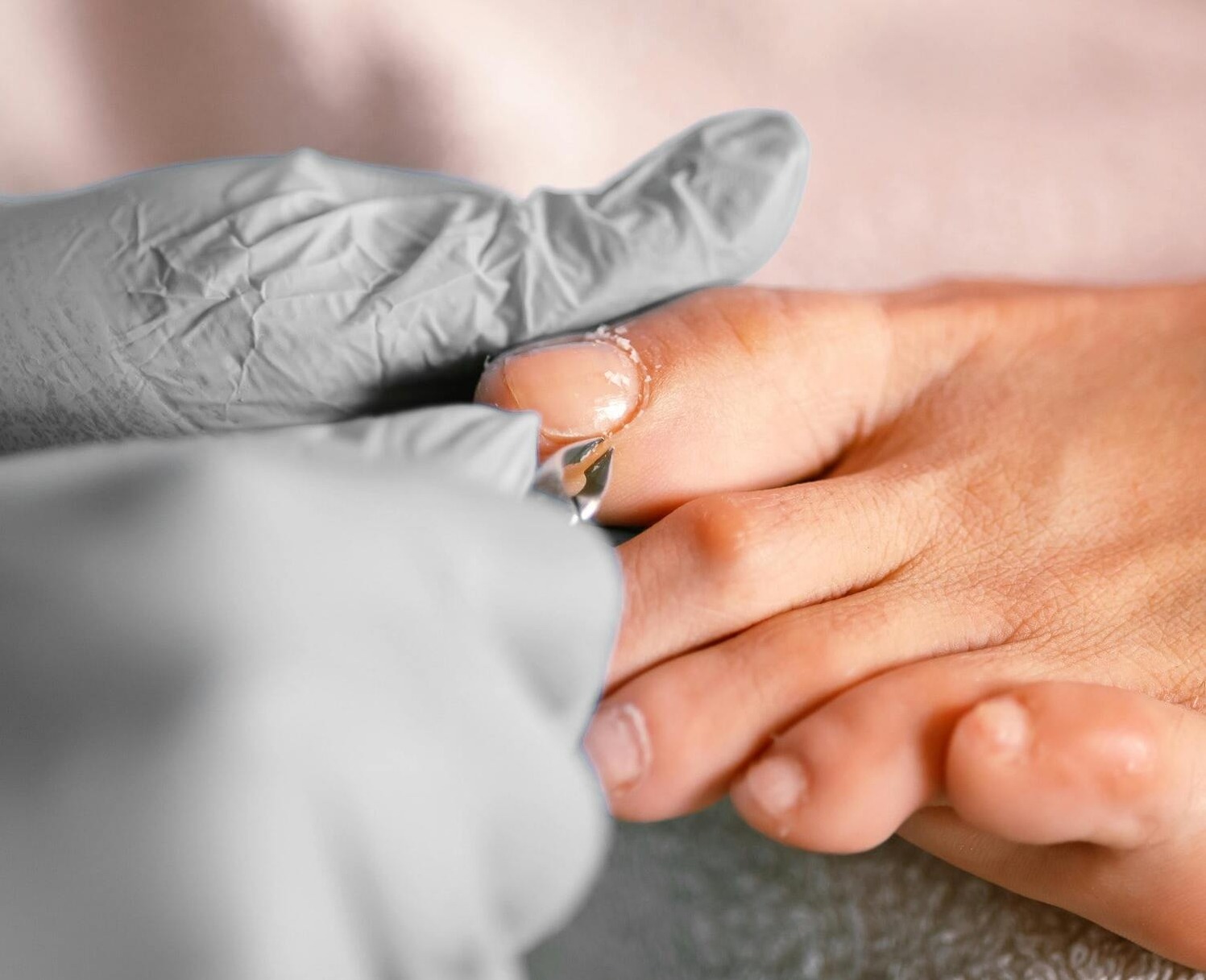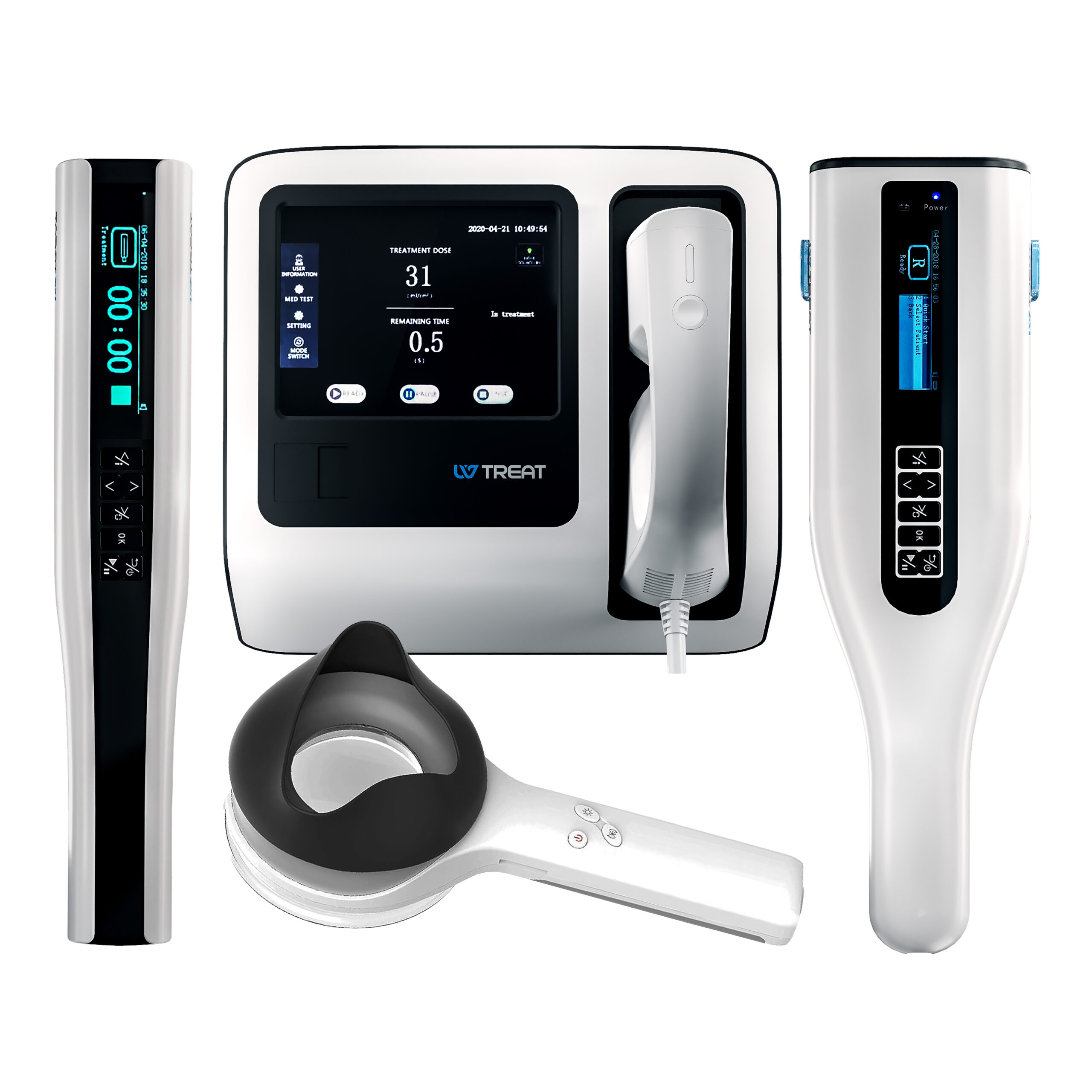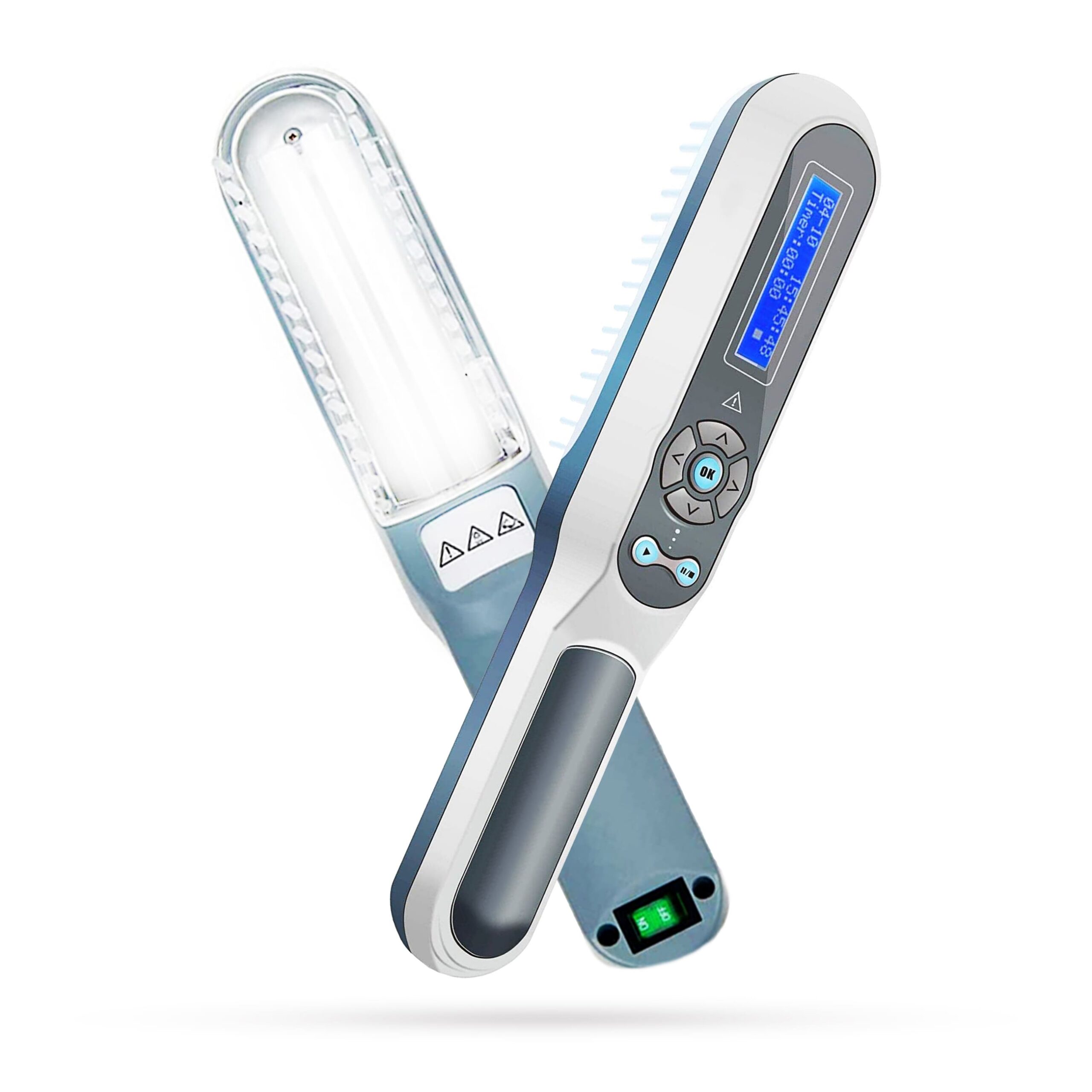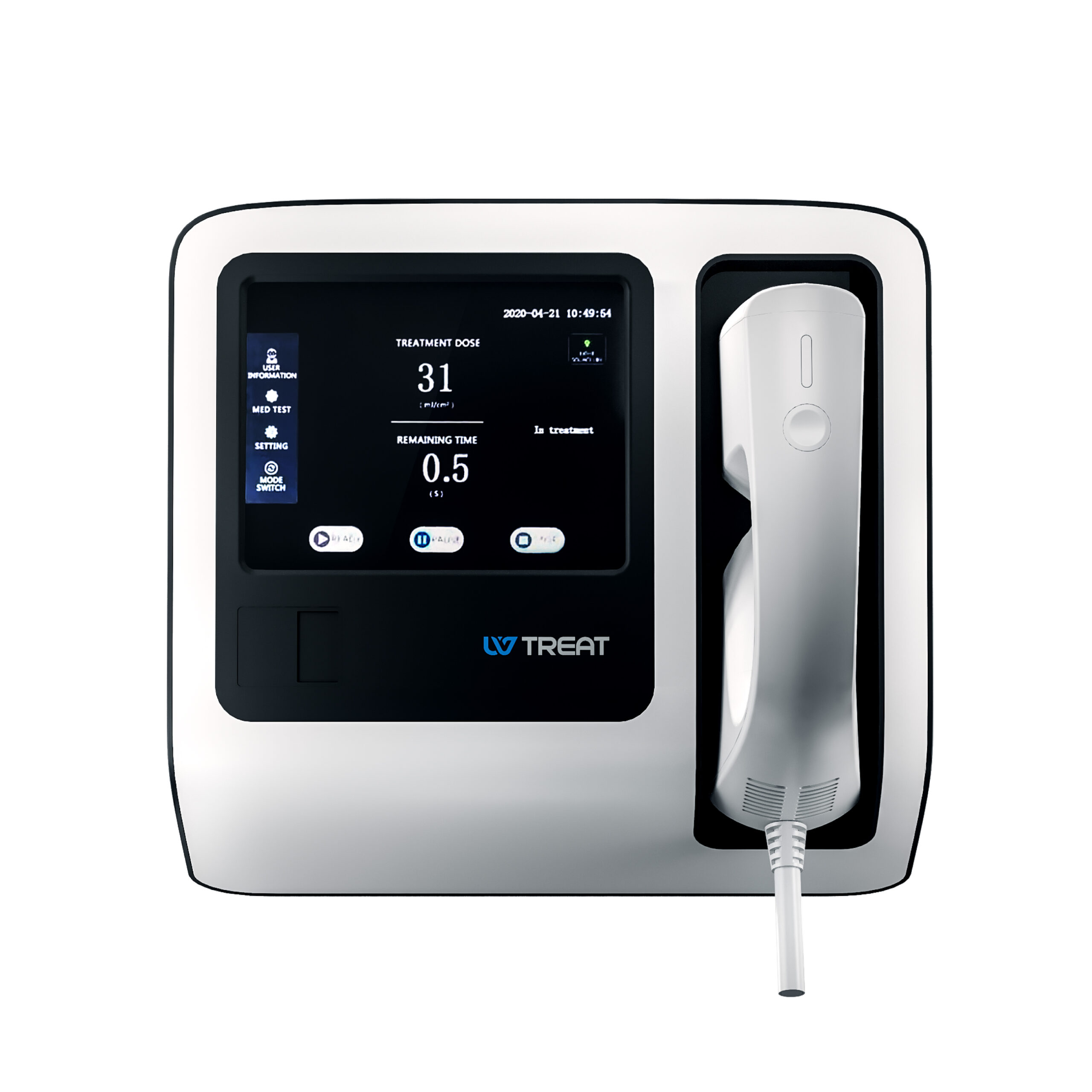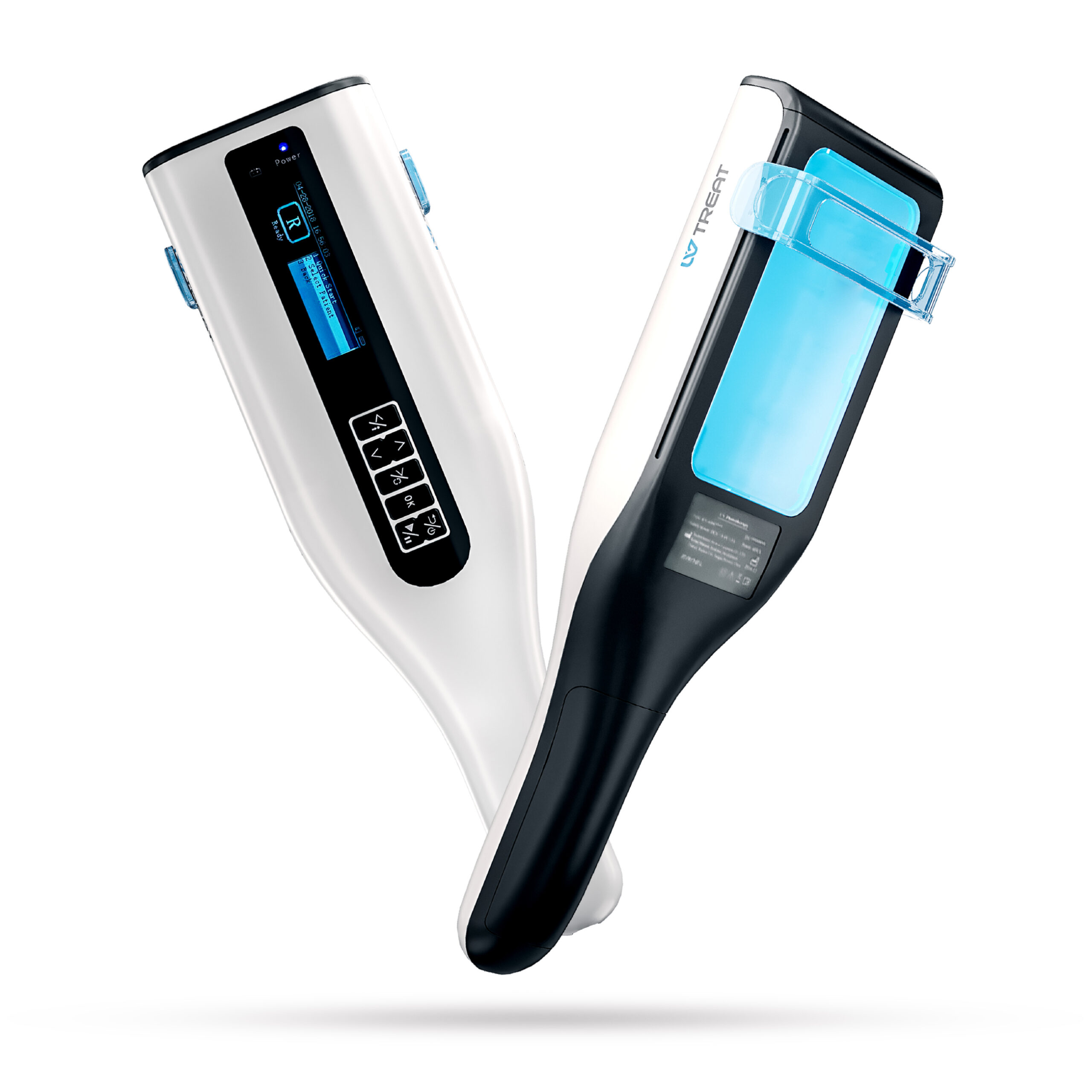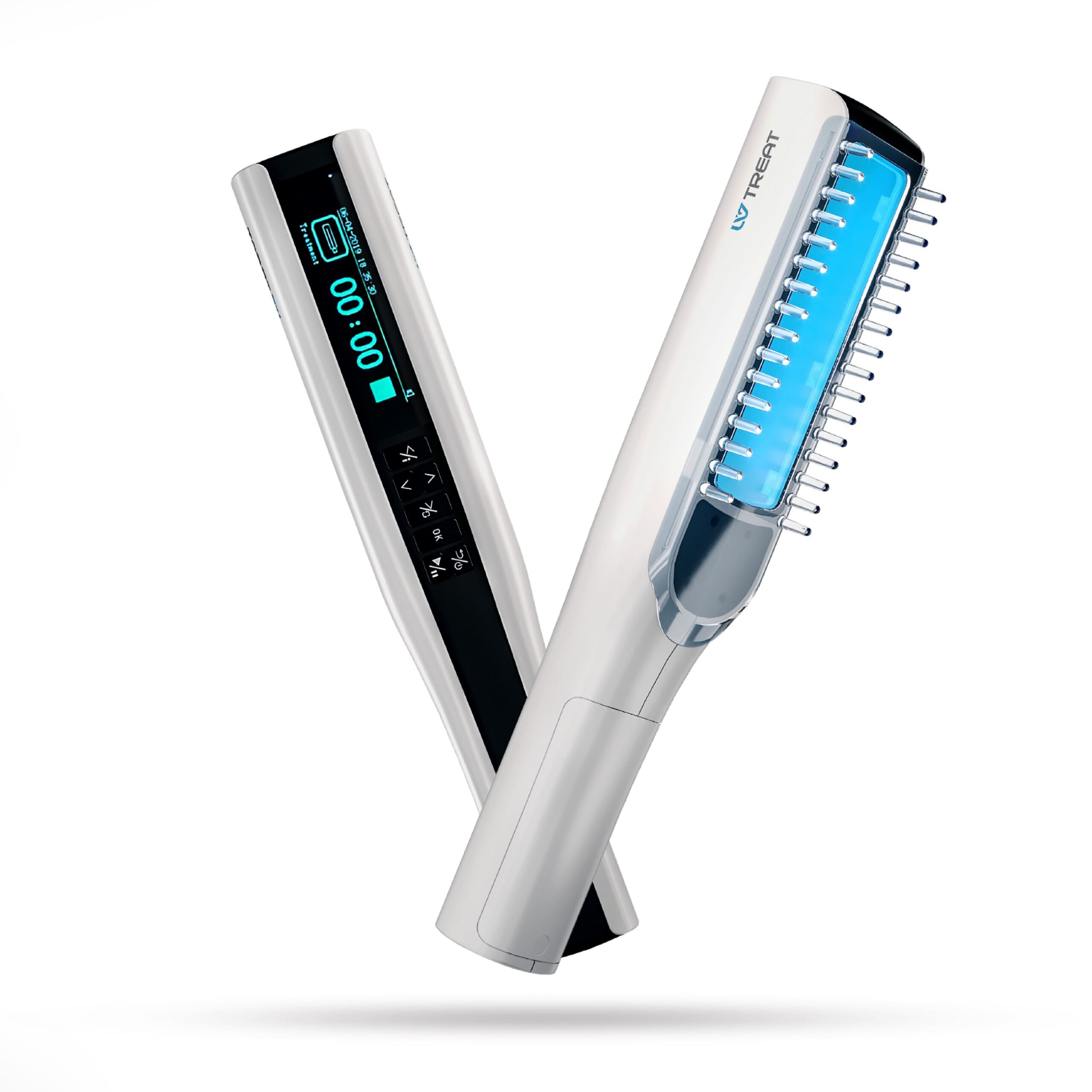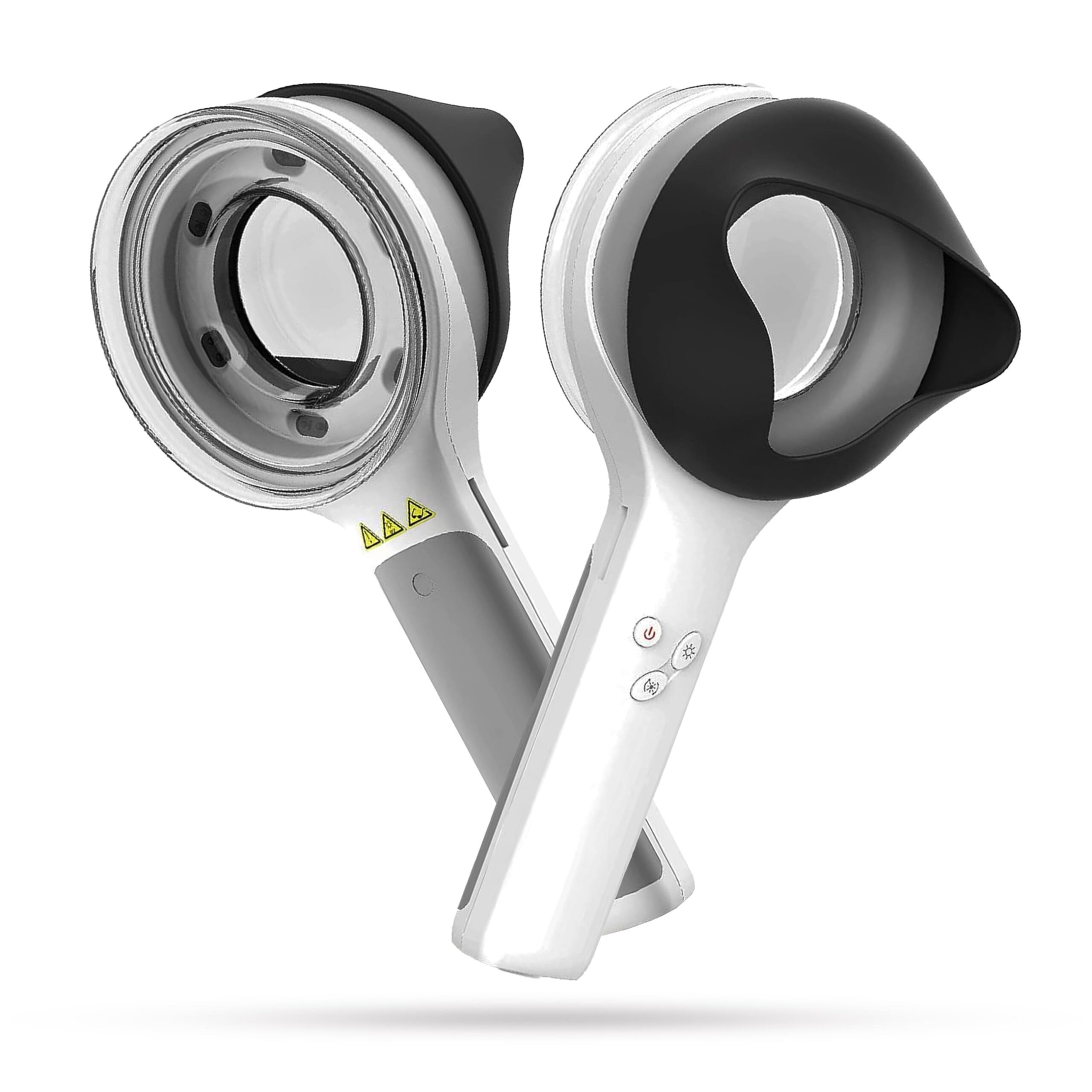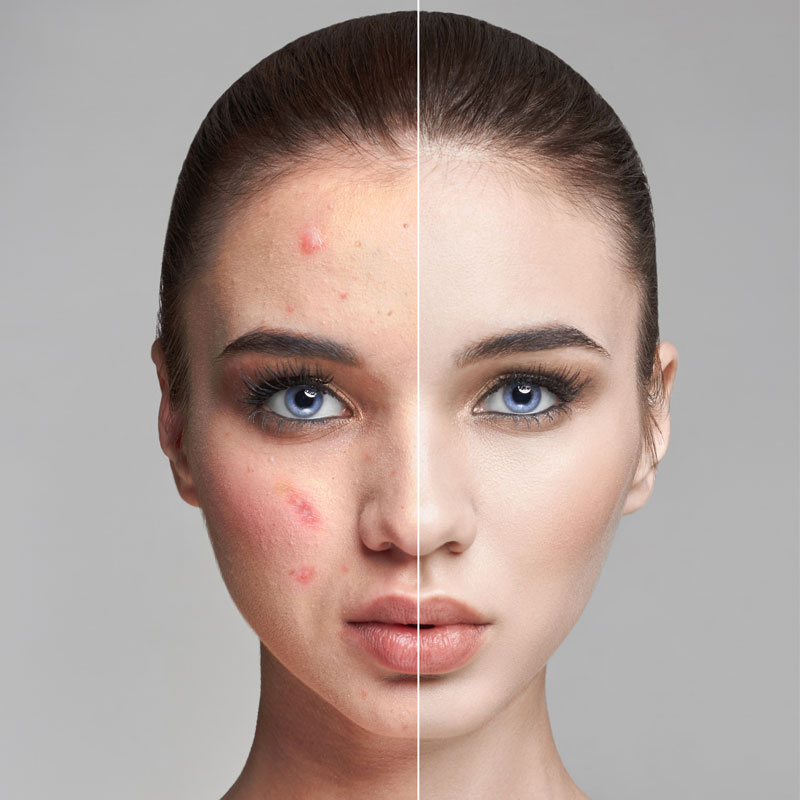Toe fungus is a common affliction that happens to most people at some point in their life. It is not something that is particularly dangerous, but it can be inconvenient and quite difficult to shake loose from. New therapies are continually being developed, but one that has gained in popularity is the UVB narrowband phototherapy. This involves using UV light to kill toenail fungus.
Toe fungus can also vary in it severity. For those cases that are quite mild, medication might be the best solution. For those cases where this does not work, stepping up the treatment a bit to include laser treatments or even ultraviolet or infrared irradiation can be effective. Using uv light for toenail fungus can also be combined with the medication to treat the problem. Of course, this all depends on what the experts recommend. Unfortunately, this treatment, when done by a professional, can be a little pricey.
How to Use UV Lamps for Toenails Fungus?
Nowadays, people are able to buy their own UV lamps to do this treatment themselves. Does UV light kill fungus? Using this light directed at the affected area can be very effective. In order to apply the correct treatment so the fungus does not return, it is important to also treat the shoes on the inside with the UV light. If a lamp is not available, then direct sunlight can also do the job. If the shoe is not treated, then the fungus can re-infect the toes. This is true whether you choose to use medication to treat the problem, or whether a UV light is used. The spores have to be killed for this re-infection not to happen. Of course with any therapy, when a novice takes on the task of treating the problem, it can become somewhat complicated. It always needs to be done with caution.

Many feel that UV therapy is the best treatment for nail issues. Whether this is true or not, it is becoming one of the most popular methods of treating nail fungus. The good thing about it is the fungal spores are completely destroyed by the light, therefore the fungus does not return. Any bacteria is also destroyed when using the light. The nail plate is also left in tact. With medications and creams, the nail plate can be left damaged.
Benefits of UV Lights for Nails Treatment
One advantage of using UV light for toenail fungus is the speed that it can work. Creams and medications usually take a fair amount of time to work. With the UV light, a cure and recovery are dramatically quicker. It must be used with caution however, since the UV light is able to quickly burn the skin. Therefore, starting at an exposure that is quite limited in time, and then slowly building up the time is required in order to avoid burning your skin. UV light is also able to affect a specific area. When putting cream on a fungal infection, the cream may not reach all of the spaces. With UV light, it will reach all of the spaces and can be more effective because of it.
Many people have concerns about the safety of a UV lamp. That is understandable and it is important to look into the safety of any procedures and equipment you use for anything. So long as you follow the directions and do not use the lamp longer then the recommended maximum exposure time, then there should not be any negative affects to your health.
Treatment lengths will vary from just a few seconds up to a couple of minutes per day. This usually goes on for a couple of weeks in order to see a full recovery. Since fungus likes dark places, does uv light kill fungus? The UV light is effective because it is able to penetrate through the nail to the back side where the fungus usually starts and continues reinfecting.
Despite all of this, it is important to address any medical issues with a doctor before applying any solutions of your own. Fungal problems of the toenails is usually not very serious, but it can be uncomfortable with pain and itchiness. Talking to a medical professional about a condition like this is always recommended to make sure there is not something else going on.
Guide to Toenail Fungus Treatment
Toenail fungus is a common issue, leading to thick, discolored, and brittle toenails. Medical experts say about 1 in 10 people overall have toenail fungus, but it’s as high as 1 in 2 for those over 70. When you have toenail fungus, your nail gets thick and yellow with white spots and streaks. Various things like poor hygiene, aging, genetics, or other health issues can cause this. Recognizing the signs of fungal infections can help you start treatment early.
In this article, you’ll learn all about toenail fungus, including symptoms, causes, and effective treatments.
What is Toenail Fungus?
Toenail fungus, aka onychomycosis, is a common fungal infection that affects your toenails and sometimes your fingernails, too. It occurs when fungi grow too much in or under the nail. This often happens through cuts or cracks in your toes, frequently linked to athlete’s foot. [1]
Usually, some fungi are harmless, but when they grow too much, they can infect the hard nail material called keratin, leading to onychomycosis. It usually starts on the big toe and can spread to other nails. Toenail fungus can make nails thick, brittle, and discolored, and it may even cause pain or separation from the nail bed.
The Signs and Symptoms of Toenail Fungus
Signs and symptoms of toenail fungus can appear gradually and may be easy to miss initially. They include:
- Discoloration of the nail (white, yellow, or brown)
- Darkening or cloudiness of nails
- White spots on nails
- Dull appearance
- Unpleasant odor
- Nail separating from the nail bed
- Nail shape distortion
- Brittle and crumbly nail
- Inflamed, patchy, or scaly skin around the nail
- Infection spreading to other nails
Causes of toenail fungus
Toenail fungus is often caused by fungi like dermatophytes or yeast that infect the skin beneath the nail. Bare feet touching damp surfaces like showers, pools, or locker rooms can make toenails vulnerable to infection. The infection can spread to your nails if you have an athlete’s foot. [2]
Various factors can cause it, including:
- Poor hygiene practices.
- Aging, as nails become more brittle and prone to infection.
- Genetics, as susceptibility to fungal infections can be inherited.
- Underlying medical conditions, such as a weakened resistant system or diabetes, can increase the risk of fungal infections.
- Trauma or injury to the toenail creates an entry point for fungi to enter and thrive.
- Prolonged exposure to moist environments, like sweaty shoes or damp socks, creates an ideal fungus breeding ground.
- Contact with contaminated surfaces, like swimming pools, public showers, or shared nail grooming tools, which can spread fungal spores.
Susceptibility to Toenail Fungus
It can spread from person to person or through contact with contaminated objects or places. Here’s how it can happen:
- Using communal bathing or shower facilities where many people walk barefoot increases the risk because these areas are warm and damp, ideal for fungal growth.
- Sharing towels, socks, or shoes can pass fungal spores from one person to another.
- Skin openings around nails provide easy access for germs, so biting or picking nails, or having damaged nails, can increase infection risk.
- Fungi can enter through open wounds, nail injuries, or pressure from tight shoes.
Some people are more at risk, like older adults and those with certain conditions such as:
- Nail injury or foot deformity
- Diabetes
- Trauma
- Weak immune system (like from cancer)
- Poor circulation in the legs or narrowed arteries
- Fungal skin infections elsewhere in the body
Our Recommendations to Prevent Toenail Fungus
Here are recommendations and some easy steps to prevent toenail fungus:
- Shower daily and thoroughly dry your feet, especially between the toes.
- Keep your feet clean.
- Wear shower shoes in public areas like locker rooms.
- Change socks daily, and choose moisture-wicking fabrics like wool or nylon. [3]
- Wear breathable shoes made of leather or mesh to prevent fungal growth.
- Remove wet socks or shoes promptly and dry your feet.
- Disinfect nail tools like clippers regularly.
- Avoid applying nail polish to infected nails.
- Wash hands well after touching infected nails to prevent spreading.
How To Get Rid Of Toenail Fungus
You have options like oral supplements, topical medications, and nail laser treatment to treat toenail fungus. Let’s explore these treatments:
Over-the-Counter Remedies:
You can find antifungal treatments like creams, gels, and nail lacquers at the store. Look for ingredients such as clotrimazole, terbinafine, miconazole, or undecylenic acid.
Tea tree oil, a natural antiseptic, can also be applied twice daily to the affected nail. Don’t ingest it, as it can be harmful, but its effectiveness is uncertain. [4]
Prescription Medications:
Your podiatrist may prescribe stronger medications if self-care procedures and over-the-counter treatments don’t improve the condition.
Oral Supplements
These medications, like terbinafine, itraconazole, and fluconazole, are commonly used as the first choice for toenail fungus treatment. They are taken orally and work throughout the body.
Itraconazole
One option is itraconazole (Sporanox), which helps grow a new, healthy nail. Treatment typically lasts 6-12 weeks, but complete nail regrowth may take several months. However, these drugs may cause side effects like rash or liver damage, and they could interact with other medications. [5]
EBM IL4
Another option is EBM IL4. It is an oral supplement aimed at promoting healthy toenail growth and improving the appearance of nails affected by fungal infections. It contains minerals, vitamins, and natural ingredients to support nail health. Benefits include stronger nails, improved color, and reduced infection risk.
Topical Treatment of Nail Fungus
The FDA approves three topical medications for onychomycosis treatment: ciclopirox nail lacquer (Penlac), tavaborole (Kerydin), and efinaconazole (Jublia). While safe, these treatments alone are not very effective, working only 8-20% of the time.
Nail-softening creams are also available. They involve a paste that softens infected nail parts, which can then be removed with a scraping device. This method may not be suitable for everyone.
Nail Laser Treatment
Nail laser treatment is a quick and minimally invasive procedure done in the office. It uses a specialized laser to kill fungal cells in the toenail. Benefits include fast results, low risk of side effects, and minimal invasiveness. [6]
UV Light for Toenail Fungus
Using UV light therapy for toenail fungus is a safe and effective method to treat nail fungus. It entails exposing the affected area to ultraviolet (UV) light emitted from a device that produces UVB radiation.
Nail Removal Surgery
If other treatments fail or cause severe pain, your doctor might suggest removing the infected nail. This allows a new, healthy nail to grow, which may take over a year. [7]
Most Effective Treatment For Toenail Fungus
The most effective treatment for toenail fungus is laser therapy, which targets the infection beneath the nail without harming the keratin. It typically requires a few sessions, but it’s fast and safe, with no liver side effects. [8]
Laser therapy has an 80% success rate, using light energy to kill the fungus while allowing new, healthy nail growth. The laser heats the nail, destroying the genetic material of the fungus and restoring normal nail color and thickness.
The Procedure
Laser toenail fungus treatment doesn’t require anesthesia. The dermatologist will pulse the laser with specific wavelengths to minimize skin heat and side effects. Some pain or bleeding may occur as tissue breaks down, but adjustments can be made if discomfort is too much.
During the procedure:
- You’ll sit in a chair with shoes and socks off.
- A technician will use a device to shine light onto each affected nail.
- You might feel some heat from the lasers.
- The process usually takes about 30 minutes.
Recovery:
There’s typically no downtime, and you can resume normal activities right after each session. However, it may take about two months to see results from the procedure.
The Results: Healthy Nails!
Laser treatment offers a solution for stubborn toenail fungus infections. The safety and effectiveness of laser treatment for nail fungus have been studied. [9] This treatment promotes healthy nail growth and is quick and painless. With just a few sessions, you can see significant improvements.
A 2019 meta-analysis suggests that laser therapy can be effective and safe, with CO2 laser therapy showing promising results. [10] It’s essential to discuss with the clinic the types of lasers they use and their success rates before scheduling a session.
Contact UV Treat to schedule an appointment and let professionals help you treat your nails so you can enjoy wearing your favorite footwear again.
Advantages of Laser Treatment for Toenail Fungus:
- Effective: Laser treatment directly targets the fungus, effectively eliminating it.
- Safe: Laser treatment has an excellent safety record and doesn’t cause adverse drug interactions, reactions, or allergic responses like oral or topical antifungal medications.
- Non-invasive: It doesn’t require surgery or incisions, making it a non-invasive option.
- Painless: Laser treatment is typically painless, with most patients experiencing only mild discomfort, if any.
- Quick treatments: Sessions typically last about 30 minutes, making it a convenient option.
- Promotes healthy nail growth: Laser treatment encourages the growth of healthy nails, restoring their appearance.
- Long-lasting results: Many patients experience long-lasting results after their laser treatment sessions.
Summing Up!
In conclusion, fungal nail infections are common but preventable. Various treatments, including laser therapy, are available with a low risk of side effects. While toenail fungus isn’t usually painful, it can cause embarrassment.
You don’t have to hide your feet because of nail fungus! If you’re experiencing discomfort, feel free to fill out the form and book an appointment at UV Treat. Our healthcare providers can offer personalized treatment options to help you regain confidence in your nails and enjoy wearing open-toed shoes again!
